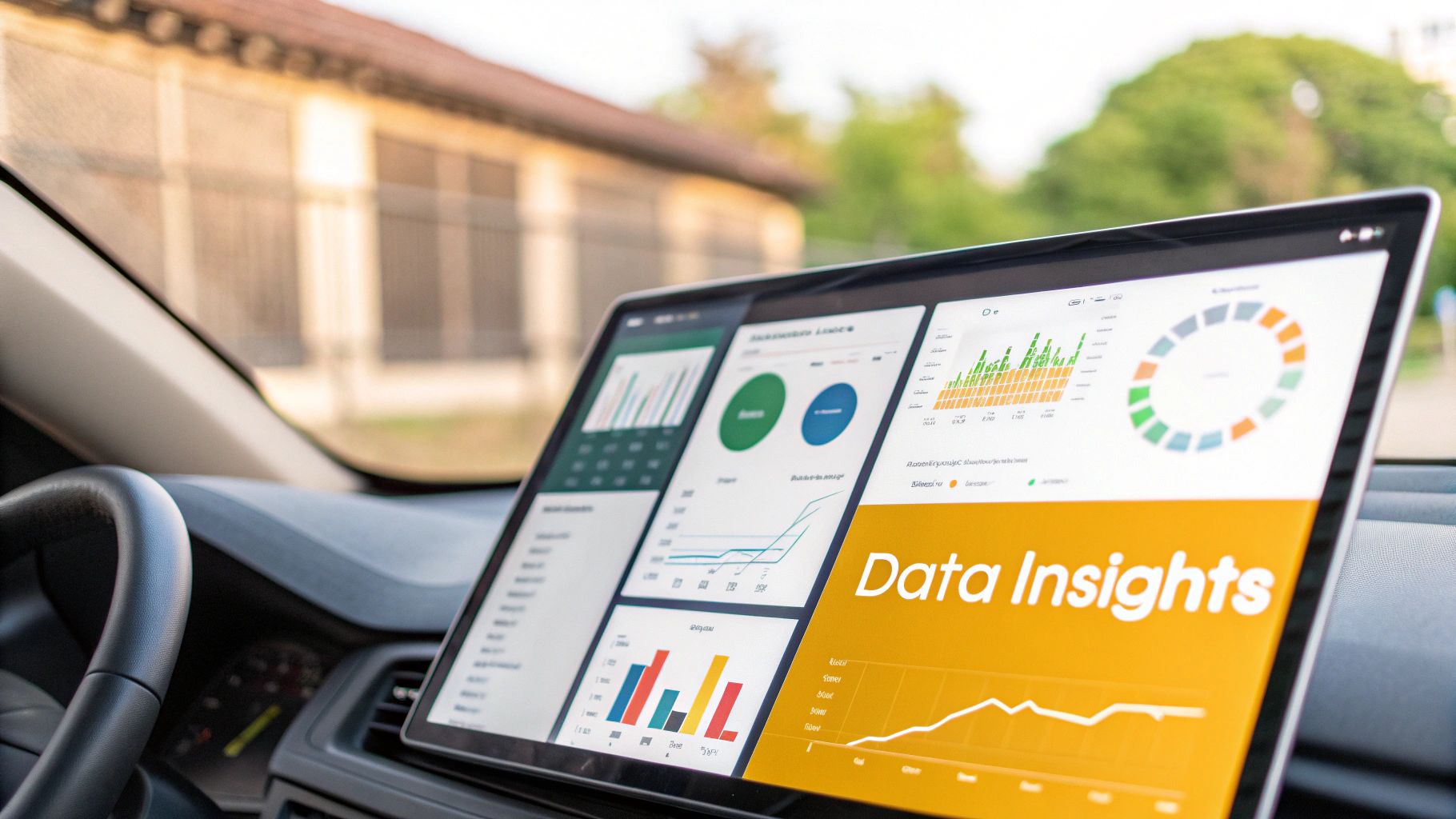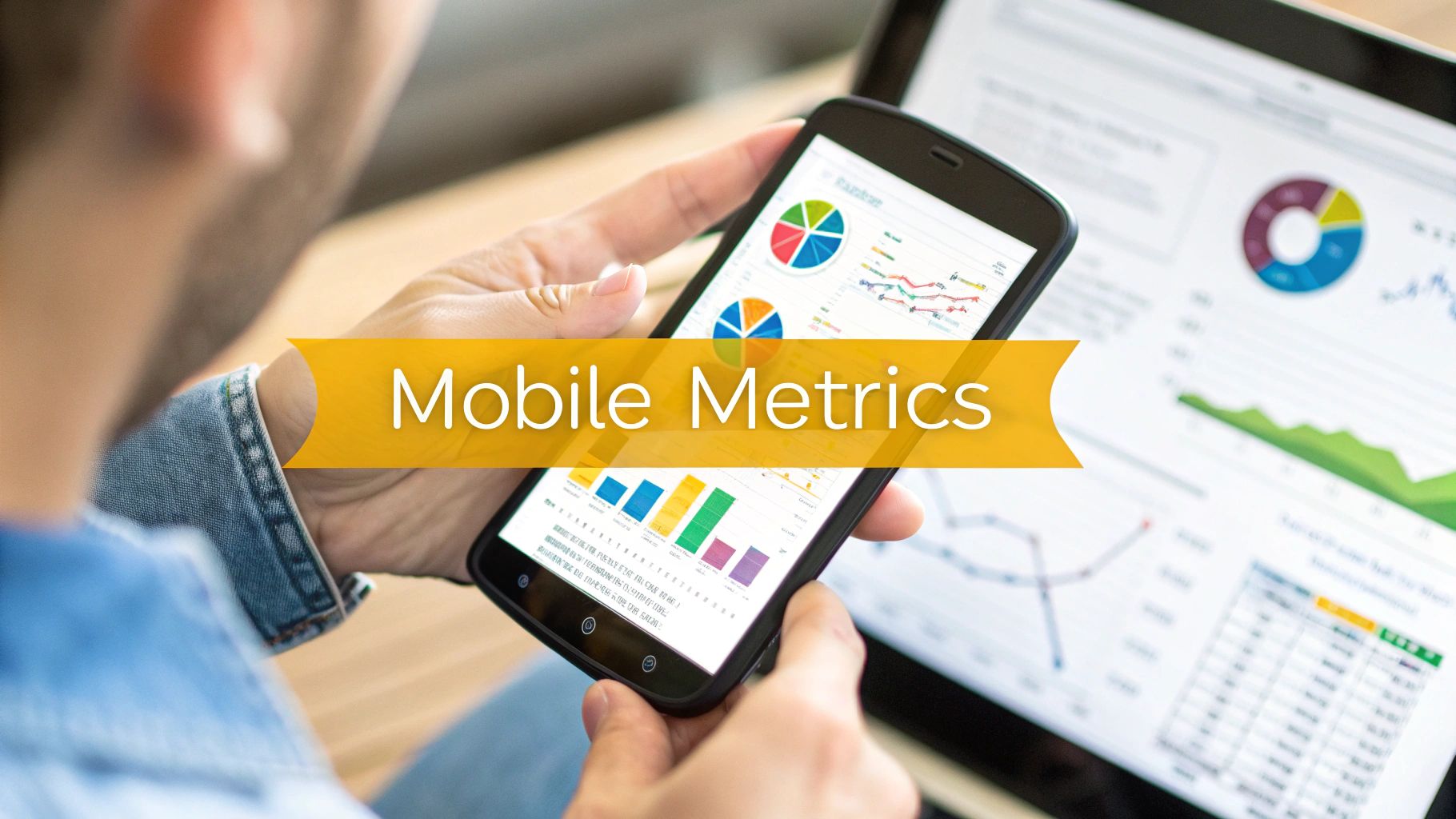10 Best Social Media Analytics Tools to Supercharge Your Strategy

Understanding Social Media Analytics: From Data to Strategic Decisions
Social media has become essential for modern business success. At its core, social media analytics helps companies gather and analyze platform data to make smarter decisions about their online presence. This goes far beyond basic metrics - it's about truly understanding your audience and using those insights to grow your business. Think of social media analytics as your GPS system for navigating the complex world of social platforms.
From Metrics to Meaningful Insights
Early social media tracking focused mainly on counting likes and shares. Today's analytics tools provide much richer data about who your audience is, how they feel about your brand, which content works best, and what your competitors are doing. This deeper understanding helps companies create more targeted campaigns and engaging content that connects with their specific audience. The result is strategies based on real evidence rather than guesswork.
Leveraging Social Media Analytics Tools for Success
Companies now use specialized analytics tools to gain key advantages in their social media efforts. These tools spot emerging topics, reveal audience preferences, and monitor competitor moves in real-time. Many platforms also offer custom reporting features to help teams visualize data and demonstrate results to stakeholders. For example, Sprout Social provides detailed analysis of sentiment, audience behavior, post performance, and competitive intelligence all in one place. Want to explore more options? Check out this guide to top social media analytics tools.
Turning Data Into Actionable Strategies
The real value of analytics comes from using the data to improve your social media approach. By studying which types of posts get the most engagement, companies can focus their efforts on content their audience actually wants. For instance, if videos consistently outperform other formats on Instagram, that suggests investing more resources in video creation. This data-driven method ensures you're making the most of your social media time and budget while maximizing impact with your target audience.
Essential Features That Drive Performance Results
Social media analytics tools now offer powerful capabilities that go far beyond basic metrics like likes and shares. These advanced tools help businesses make data-driven decisions and get real insights into what's working. Let's explore the key features that make a meaningful difference in social media performance.
Key Features for In-Depth Analysis
The most valuable social media tools provide deep analytical capabilities to uncover meaningful trends and patterns. Sentiment analysis examines the emotional tone of audience comments and reactions, helping brands understand how people truly feel about their content and catch potential issues early. Competitive intelligence features allow you to benchmark against competitors and find gaps to fill in the market.
- Sentiment Analysis: See how audiences emotionally respond to your brand and content
- Competitive Intelligence: Monitor competitor strategies and find market opportunities
- Customizable Reporting: Build targeted reports to communicate insights effectively
The Power of Customizable Reporting and Data Visualization
Raw data only becomes valuable when you can interpret and act on it effectively. This is where customizable reporting makes a crucial difference. You can focus on the key performance indicators (KPIs) that matter most for your goals and create clear visual reports that help teams make better decisions. For example, tracking metrics like engagement rate, reach, impressions, and conversion rates shows exactly how campaigns perform and prove ROI. Features like automated reporting also save significant time.
User-friendly dashboards provide a complete view of performance across all your social channels in one place. This makes it simple to spot trends, measure progress, and quickly identify areas needing attention. For instance, Semrush Social offers an intuitive platform with easy-to-understand analytics and competitive tracking capabilities - perfect for businesses wanting a comprehensive overview of their social presence. Learn more about social analytics tools.
Choosing the Right Tool for Your Needs

Finding the right analytics tool depends on your company's specific requirements and resources. Small businesses often need affordable, straightforward solutions, while larger companies may require advanced features like predictive analytics and real-time monitoring. Consider which social platforms matter most for your audience and look for tools specializing in those networks.
The best social media analytics tools help transform complex data into clear insights that drive better results. By understanding these essential features and carefully evaluating options based on your needs, you can select a tool that helps achieve your social media goals and business objectives.
Measuring ROI: Connecting Social Metrics to Business Growth
Getting value from social media analytics requires translating complex data into clear business results. When working with stakeholders, you need to show real return on investment (ROI) from your social media activities. The key question is: How do your social efforts impact the bottom line?
Establishing Meaningful KPIs and Tracking Conversions
Start by defining key performance indicators (KPIs) that connect directly to your business goals. If you focus on generating leads, track metrics like website clicks and conversion rates from social platforms. For brand building, prioritize reach, impressions, and share of voice instead. By monitoring these specific KPIs, you can see how social media drives real business outcomes.
Understanding the customer journey helps complete the picture. Social analytics tools reveal how users move from first seeing your content to taking desired actions like making purchases or signing up for newsletters. This tracking shows which channels and content types work best for conversions.
Building Comprehensive Reporting Frameworks
The most effective social media measurement goes beyond basic metrics to tell a clear story about performance and impact. Your reports should explain what the numbers mean, highlight important trends, and demonstrate the link between social activity and business growth. For example, show how increased Instagram engagement led to more website traffic and new leads. Think of it like a sales funnel - social media fills the top, feeding qualified prospects to later stages that you can measure.
Measuring Direct and Indirect Impact
Social ROI includes both direct and subtle benefits. Direct impact means clear results like sales from social campaigns. Indirect impact covers harder-to-measure but vital areas like brand awareness, customer loyalty, and service quality. Social listening tools provide insights into brand sentiment and customer conversations to help assess this indirect value. By looking at both types of impact together, you get a complete view of how social media helps grow your business. This comprehensive approach helps justify investments and show stakeholders the full value of your social strategy. In the end, good analytics empower you to make smart decisions that improve results.
Multi-Platform Analytics: Creating Unified Social Insights

Managing social media across multiple platforms requires a clear view of how each channel helps achieve your business goals. This is where multi-platform analytics makes a real difference - by gathering and analyzing data from all your social platforms in one place, you can make smarter decisions about content and get better results from your social media efforts.
Building a Unified Dashboard for Cross-Platform Analysis
Think of social media data like puzzle pieces scattered across different rooms. A unified dashboard brings all those pieces together into one clear picture. By collecting key metrics from all your social channels in a single view, you can easily spot what's working and what needs improvement.
You can track important numbers like engagement rates and reach across platforms at a glance. This helps you quickly see which content resonates with your audience and make faster, data-backed decisions. When you know which channels deliver the best results, you can focus your time and resources where they matter most.
Identifying Platform-Specific Opportunities
While having a big-picture view is essential, each social platform has its own unique features and audience behaviors. Looking at platform-specific data helps uncover opportunities you might otherwise miss. Here's what to focus on for each major platform:
- Instagram: Measure how visual content and Stories perform
- Twitter: Look at retweets, mentions, and hashtag reach
- Facebook: Monitor group activity and page growth
- LinkedIn: Track post sharing and network expansion
This detailed approach lets you adapt your content for each platform's strengths. For example, knowing when your Instagram audience is most active helps you time your visual posts for maximum impact and reach.
Optimizing Content Distribution Based on Channel Performance
Good analytics show you exactly which types of content work best on each platform. This knowledge helps you share and repurpose content strategically. A successful LinkedIn article can become an eye-catching Instagram infographic or a series of tweet-sized insights. This approach ensures your best content reaches the right people in formats they prefer.
The data also helps you create more focused content. By understanding what works on each platform, you avoid wasting time on content that won't connect with your audience. This targeted strategy, guided by real performance data, helps you get better results from your social media investment across all channels.
I will break down section 1 into paragraphs.
Text:
Competitive Intelligence: Turning Insights Into Advantages
Getting a clear picture of what your competitors are doing is just as important as understanding your customers. With social media analytics tools, you can gather valuable data about competitor activities and use those insights to give your brand an edge. This helps brands spot new opportunities, see industry changes early, and maintain an advantage.
Analyzing Competitor Content Performance
A key benefit of competitive intelligence is seeing which content works best with your audience, even when your competitors create it. By tracking how different types of posts perform, you can fill gaps in your own content strategy. For instance, if you notice a competitor's videos get much more engagement than their photos, that suggests video content could be worth investing in. You can use real data to create content your audience wants to see.
Decoding Audience Engagement Patterns
Looking at how people interact with competitor content reveals valuable clues about what motivates your target audience. Social media tools show more than just likes and shares - they uncover deeper patterns in how people engage with different posts and topics. By studying these behaviors, you can adjust your content to better match what interests your audience, helping drive more engagement over time.
Unveiling Market Positioning
Knowing where competitors fit in the market helps you position your own brand effectively. Analytics tools reveal the strategies competitors use, who they target, and how they communicate. When you identify their strong and weak points, you can find ways to stand out. This lets you develop your own unique position and connect with specific customer groups, building stronger brand recognition.
Turning Insights Into Actionable Strategies
The real value of competitive intelligence comes from using it to guide concrete actions. Good analytics tools don't just provide raw data - they help you interpret and apply what you learn. Rather than just watching what competitors do, you can use those insights to improve your own approach. For example, if you spot a topic competitors aren't covering well, you can create targeted content to attract those underserved readers. This proactive strategy helps drive business growth by finding gaps your brand can fill. Using social media analytics strategically gives you a clear edge, letting you optimize your presence based on real data and market needs.
Future-Ready Analytics: Preparing for Tomorrow's Social Landscape

Social media platforms and user behavior constantly shift and evolve. This creates an ongoing need to adapt how we measure and analyze social media performance. Being successful requires understanding current trends while preparing measurement approaches that will work tomorrow.
Adapting to Evolving Privacy and Platform Changes
Major social platforms regularly update their algorithms and data policies, directly impacting analytics capabilities. For instance, recent changes around data sharing and cookie tracking have forced brands to rethink their measurement strategies. Forward-thinking companies now focus on finding alternative data sources and building measurement approaches that can withstand future privacy changes while maintaining accuracy and compliance.
Embracing New Measurement Technologies
Artificial intelligence and machine learning are opening up exciting possibilities for social analytics. These technologies enable more sophisticated sentiment analysis, prediction of trends, and automated reporting capabilities. However, it's important to carefully evaluate any new tools based on actual business value rather than buzzwords. The key is understanding how specific technologies can meaningfully improve your existing analytics processes.
Balancing Current Practices with Future Innovation
The most effective approach combines proven analytics methods with strategic adoption of new capabilities. Rather than chasing every new trend, focus on gradually integrating tools that demonstrably improve your insights.
When evaluating new social analytics solutions, consider these key factors:
- Relevance: Does it solve a real business challenge?
- Accuracy: Can you trust the data quality?
- Actionability: Will the insights drive concrete improvements?
- Integration: Does it work with your current tools?
- Cost-Effectiveness: Does the value justify the investment?
This framework helps ensure that new analytics capabilities truly enhance your measurement strategy rather than just adding complexity.
Streamlining Your Online Presence with Linkero
Managing multiple social profiles effectively requires the right tools and organization. Linkero helps bring all your social media content and links together in one customized bio page. You can showcase your various profiles and content while tracking performance through built-in analytics tools. This creates a more cohesive online presence that's easier to manage and measure.